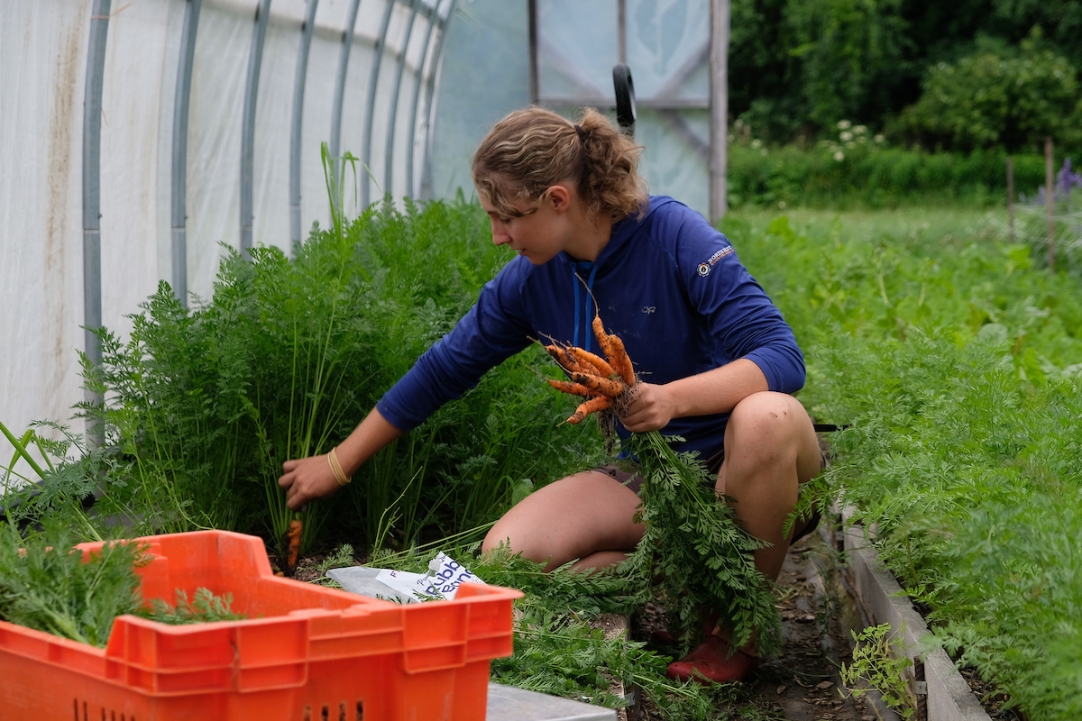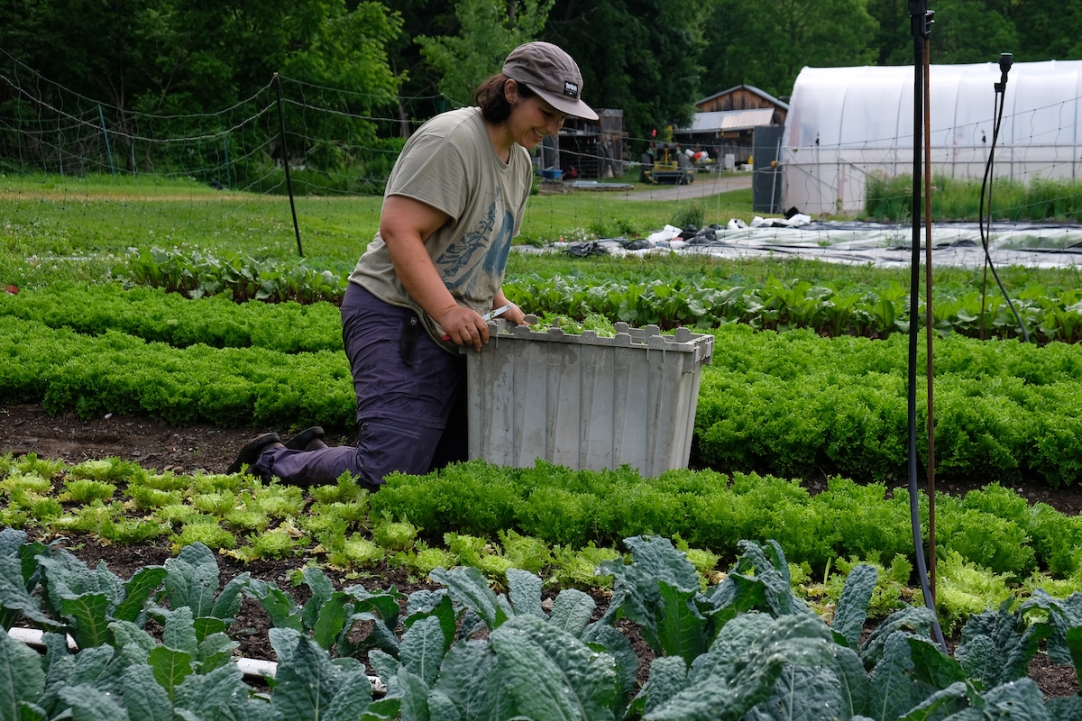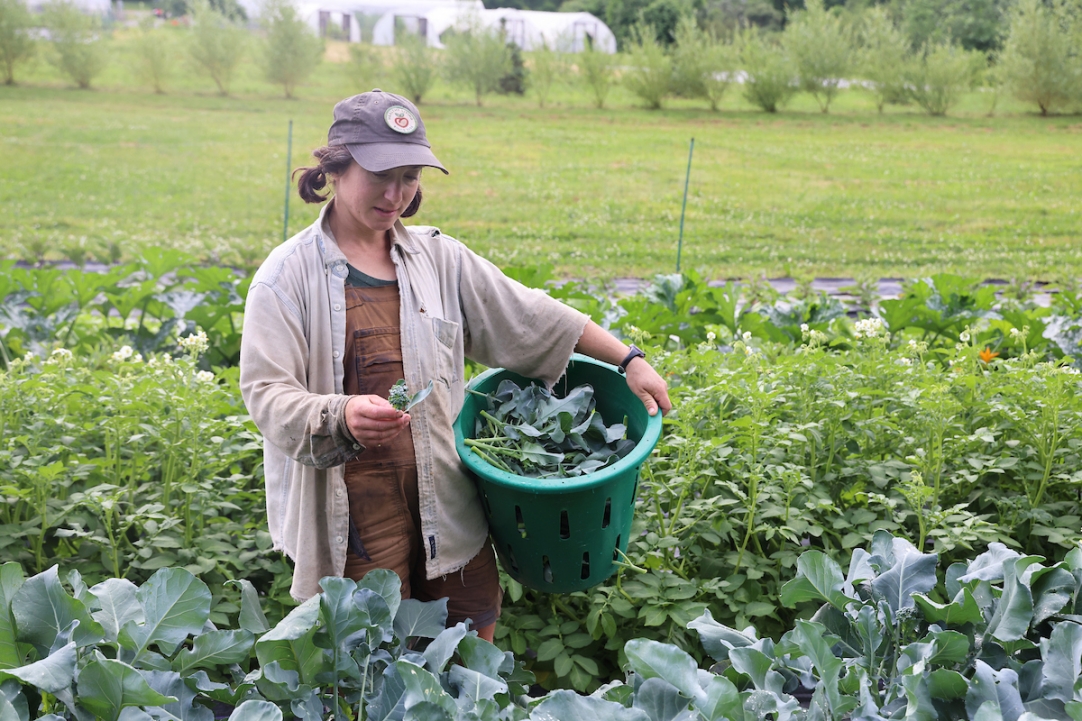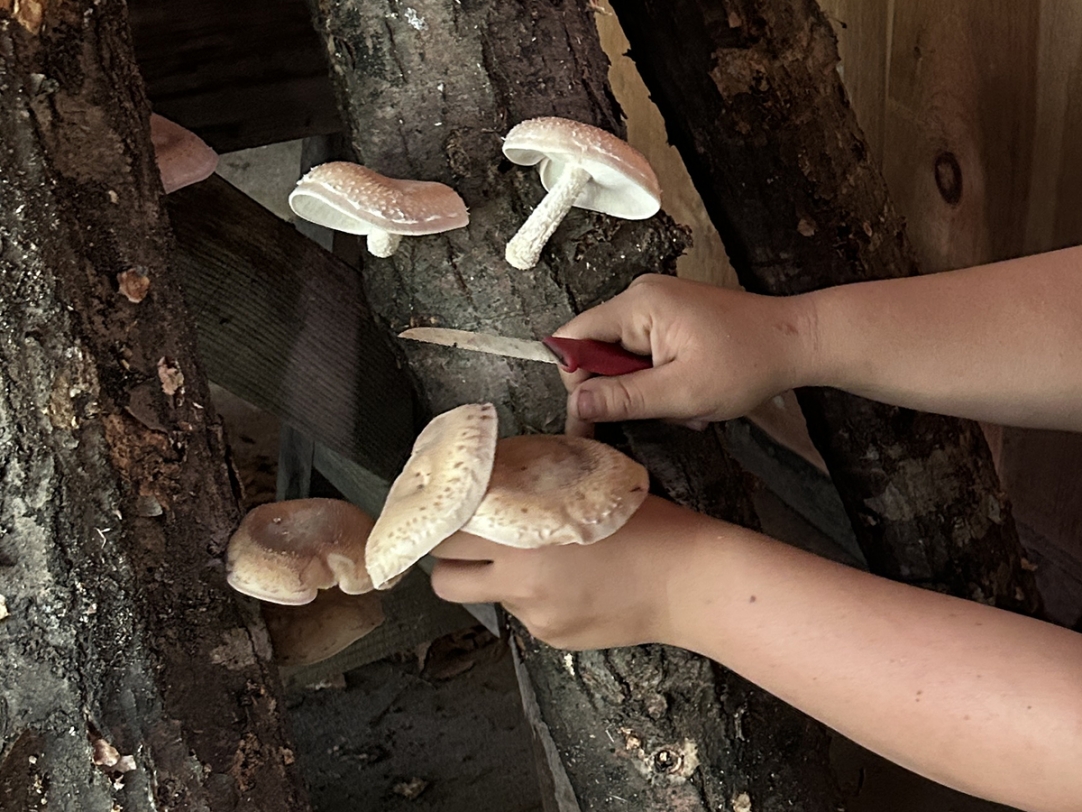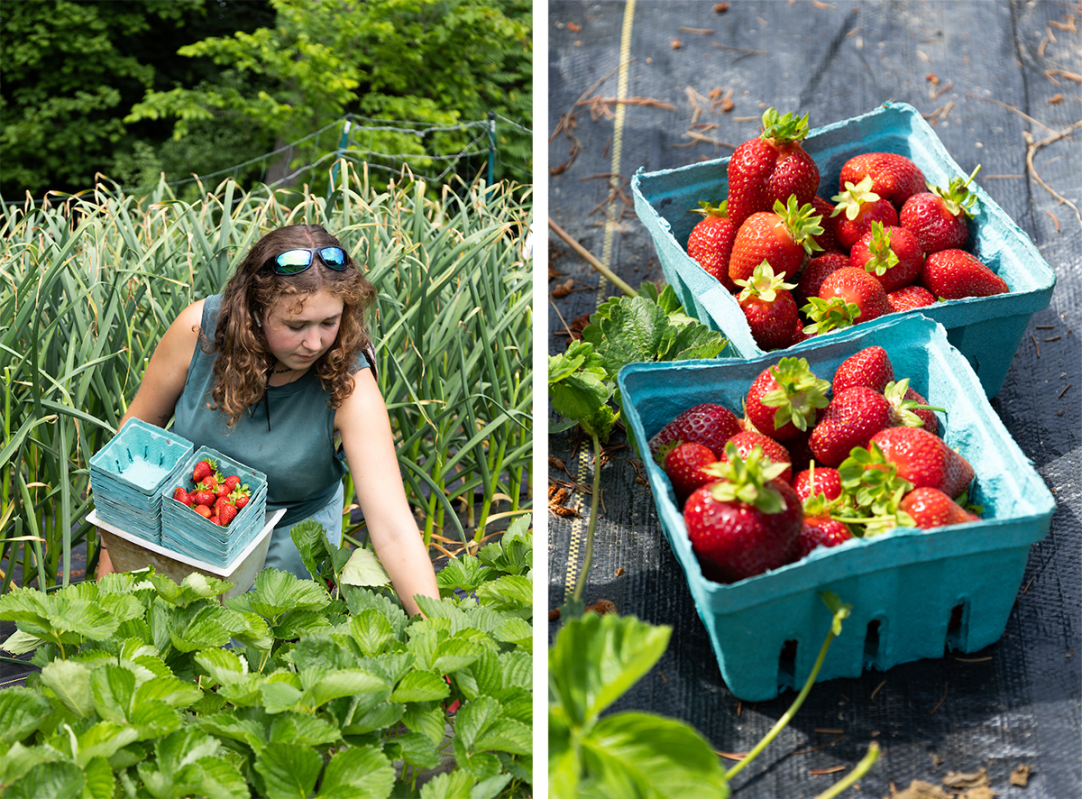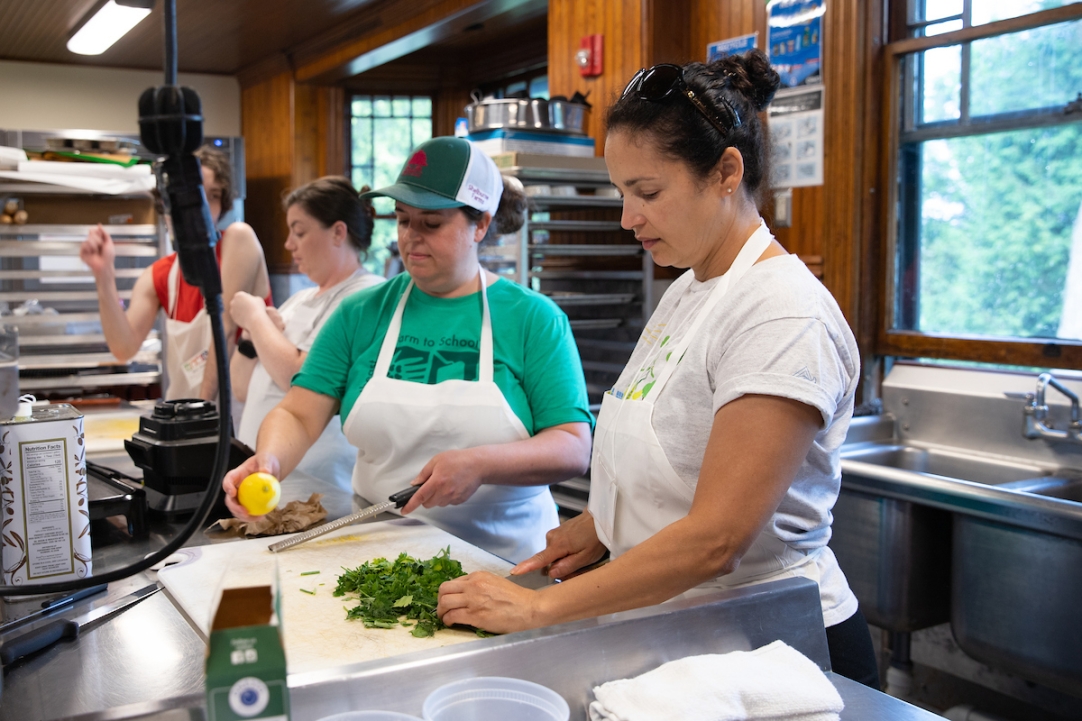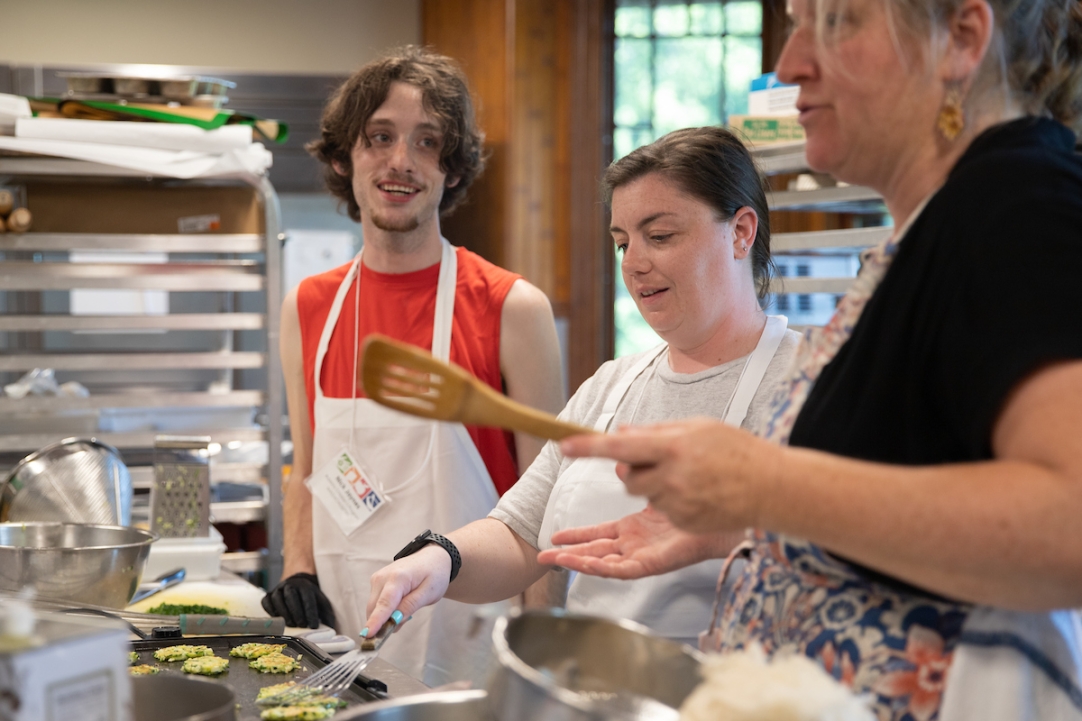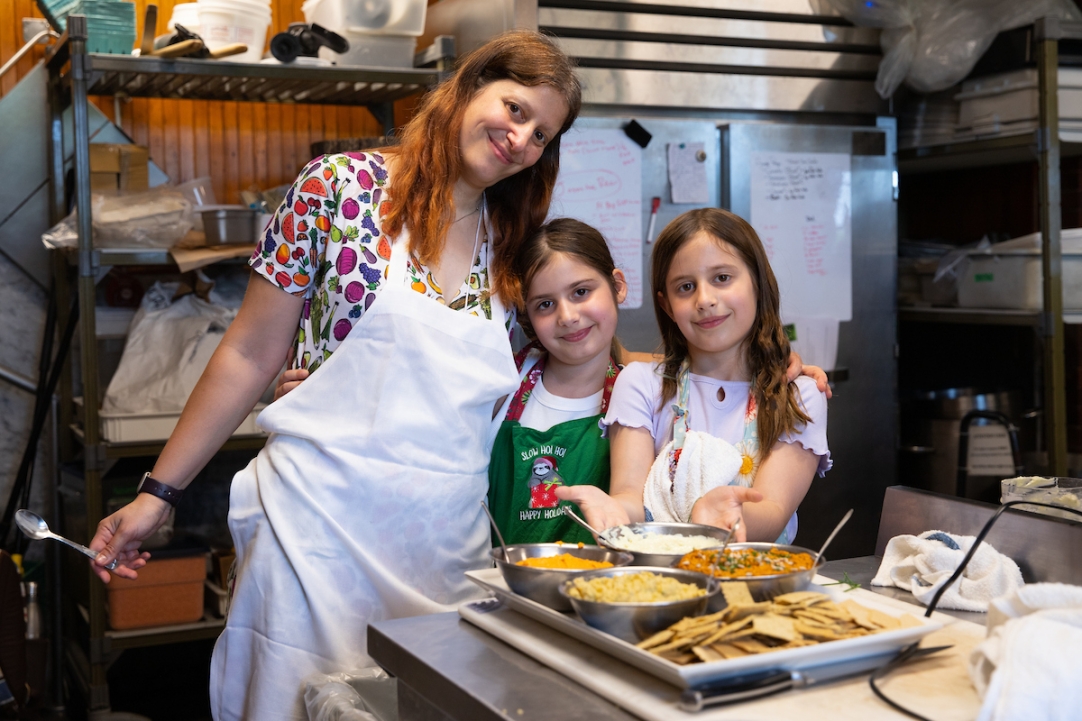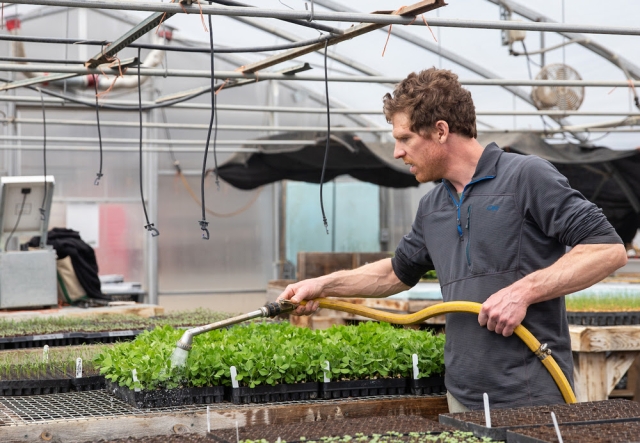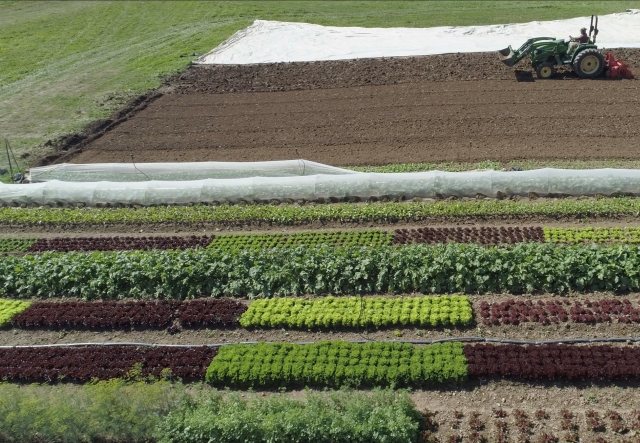24 Hours at the Market Garden
Harvest days at the Market Garden start early and are jam-packed. Here are a few highlights from all that this crew does to bring fresh organic produce to our farm-to-table Inn restaurant and to our community, all while serving as a classroom for learning.
— MORNING —
6:11 am — Moving the chickens
Crew member Sheridan Millington pulls the mobile coop to fresh pasture with the gator, lets the chickens out, then collects eggs off its manual conveyor belt. “We get about twelve dozen eggs a day this time of year,” she says. She checks for fresh water and grain, switches the electric fence back on, and hops back in the gator.
6:40 am — Collecting compost
Claire Contreras makes the daily run to the Inn to collect kitchen scraps for composting and to reclaim empty vegetable bins. After a dash to the kitchen for a cup of coffee to go, she heads for the compost field.
7:15 am — Morning meeting
The six-member crew review the day’s pick sheet. (Our chef and farm store manager submitted their requests the previous evening). Market gardener Josh Carter adds detailed instructions. “Pick the round beets, not the long ones,” he says, and, “Make sure the cabbages have firm butts.” The crew disperses to the fields.
7:30 am — Harvesting begins
Rachel Kessler looks for those “firm butts” of cabbage. “We started growing these smaller cabbages because people just like them,” she explains. “They get overwhelmed by large ones.” She holds one up. "They’re such a great shape.”
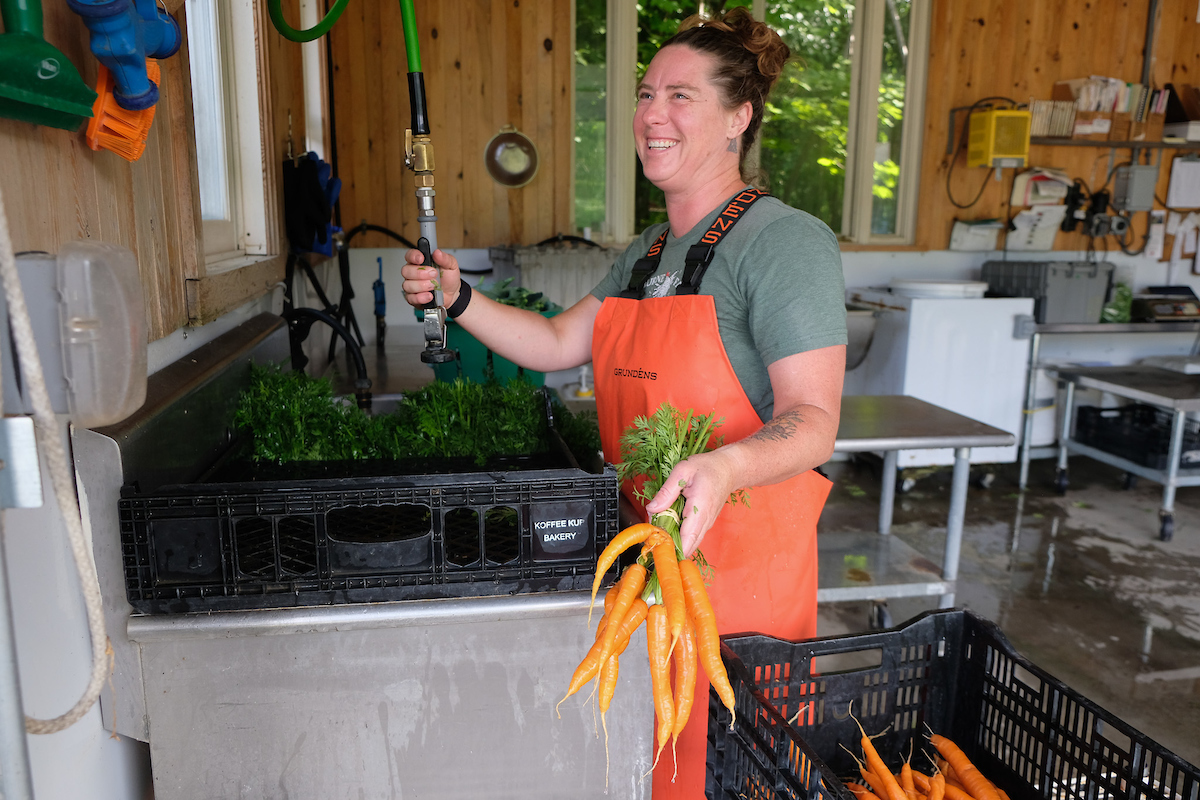
8:31 am — Washing begins
Jamie Hayes starts processing lettuce and carrots that were in the ground moments ago. The lettuce is first washed in a tub of water with organic solution, then spun in a retrofitted washing machine–a giant salad spinner. “It saves the kitchen staff a lot of prep work,” Jamie says. Later, a pair of leggy-looking conjoined carrots gets a laugh, and moves on for sale.
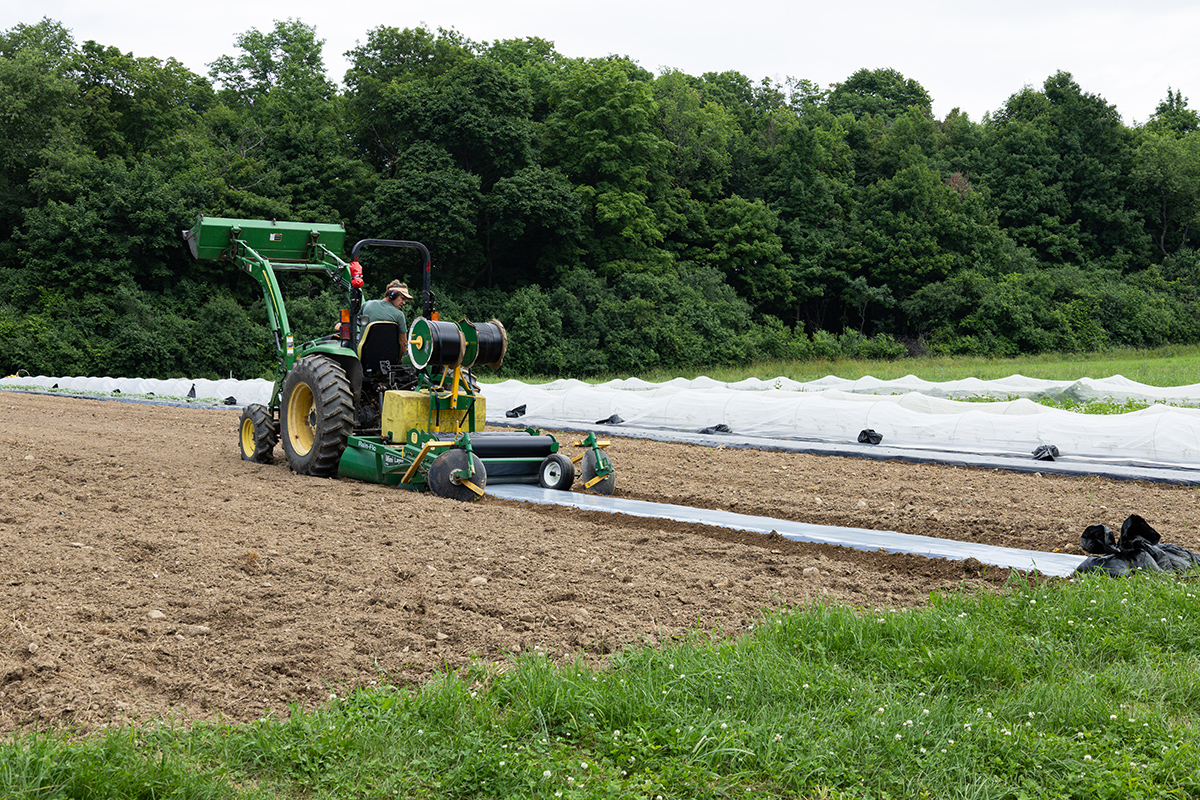
10:54 am — Preparing for planting
On North Turkey field, Josh prepares a cover-cropped bed (plowed under yesterday) for planting. He first sprays it with "soil primer," a biological blend of bacteria, fish fertilizer, and molasses that will jumpstart the soil’s living ecosystem disrupted by the tilling, then carefully spreads organic fertilizer. He secures a drip irrigation tape and a plastic mulching sheet, then slowly advances the tractor to unroll both. Plastic mulch helps retain moisture, which cuts water use, and keeps down weeds without using herbicides. It’s a tool he uses thoughtfully and carefully. Tomorrow, he’ll return to plant brussels sprouts, broccoli, cabbage and zucchini.
— AFTERNOON —
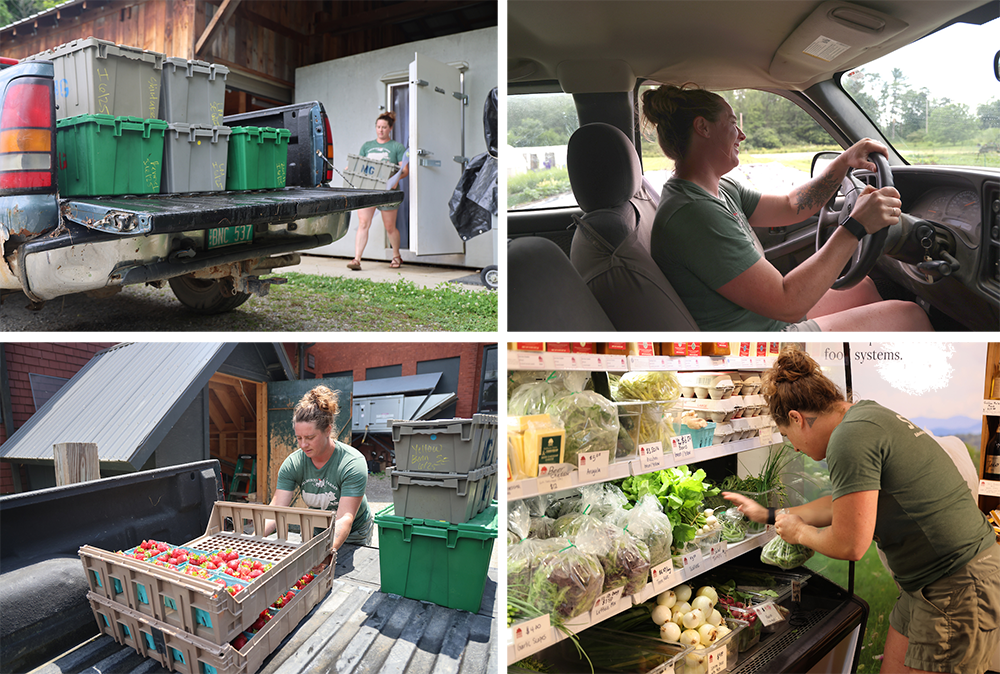
12:28 pm — Deliveries begin
Jamie loads up the truck with the morning’s harvest and makes a first run to the Inn. She returns and loads up again for the Farm Store. “I’m kind of like a produce manager,” she says, carefully arranging items in the store's display cooler. “I really like it to look nice.”
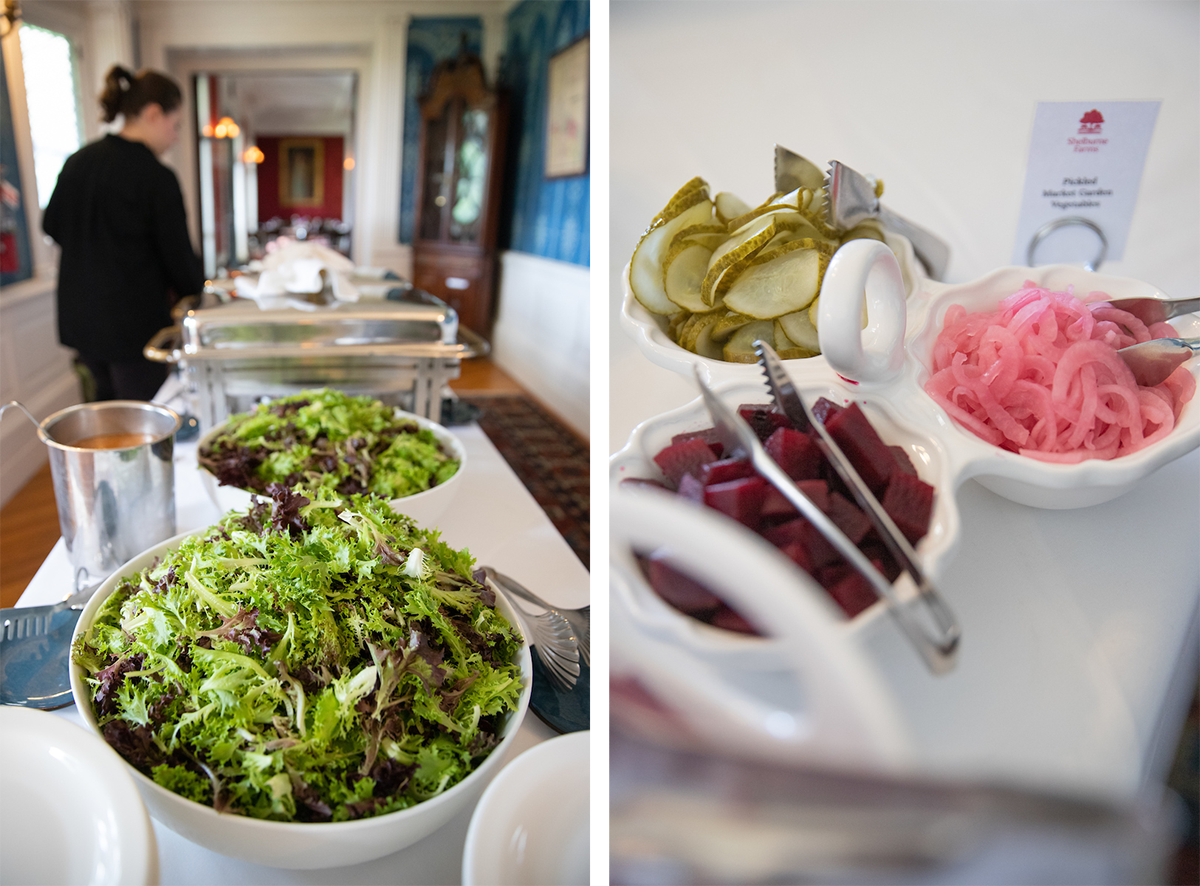
12:30 pm — Lunch is served!
Serving food from the Market Garden is a key tool to inspire teachers, school nutrition professionals, and administrators from around the region here for the Northeast Farm to School Institute kickoff retreat. They’re learning how to deepen the food system education in their schools and exploring ways to get more local food into their cafeterias. Today, our veggies round out a lunch of lamb and falafel pitas from our cookbook, New School Cuisine.
1:35 pm — Feeding the community
“My favorite veggie is whatever I take home that night,” says Ali Lopez, who works at the Farm and often runs here. “It’s all so good.” But as Jamie stocks the sprouted broccoli, Ali revises: “These are my favorite! The other day, I just tossed the leaves with some dressing and ate it like a kale salad. Sooo good!”
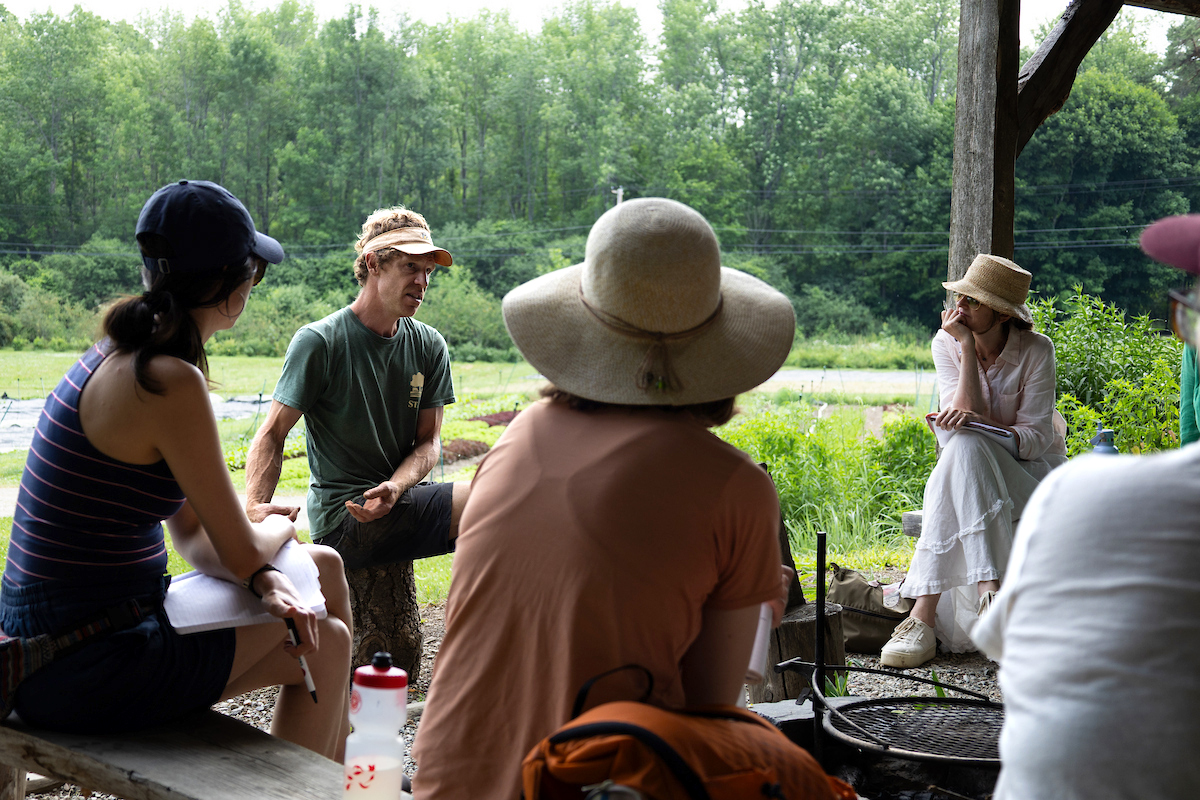
2:05 pm — Garden as classroom
Educators from the Institute gather at the garden for a learning journey, and pepper Josh with questions. “What is the benefit of no-till?” “Can you ‘no-till’ a raised bed?” Josh says that no-till requires years of carefully studying and working with the soil (and, for us, lots of compost). “It’s like getting your PhD,” he laughs. But our low-till operation is working towards it. And it requires a perspective shift: You feed the soil first, which then feeds your community.
2:30 pm — Cooking fresh
Up in the Inn Kitchens, the harvest is being put to good use on a different learning journey. Farm Functions Chef Jackie Major and educator Dana Hudson are teaching Farm to School Institute participants about cooking, particularly with kids. They blend up cucumbers for a chilled soup and pan fry squash for zucchini fritters. The workshop is about getting hands-on in the kitchen and using the bounty from gardens in flexible recipes for school classrooms.
2:45 pm — Seeding
With most of the crew gone for the day, Rachel’s final task is seeding the last zucchini of the year, a mildew-resistant variety, “Dario,” that’s perfect for cool late-season temperatures. The garden seeds for a continual supply of vegetables from April through November.
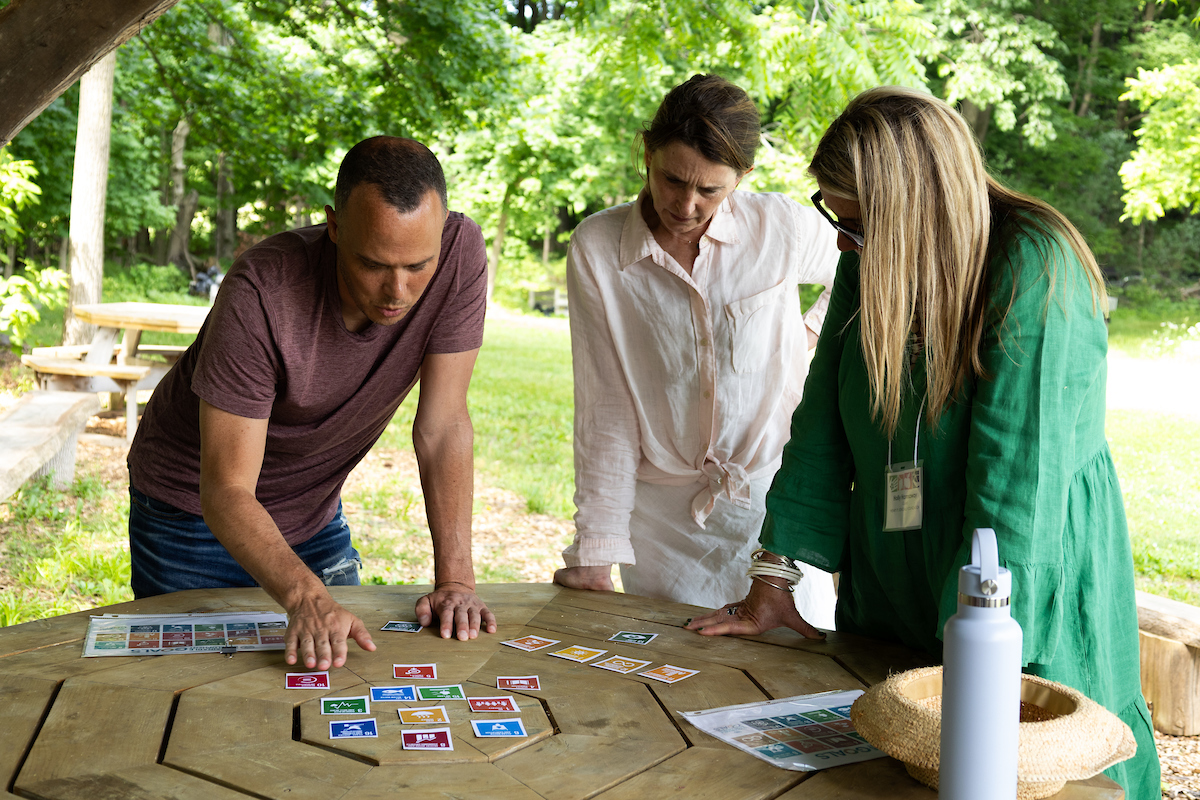
2:58 pm — Garden as classroom
Garden learning journey leaders Jen Cirillo and Andrew Margon ask the group to visualize a healthy and just food system in their communities. What would it look, sound, smell, or taste like? The group digs into the 17 UN Sustainable Development Goals, then explores the gardens looking for evidence of and inquiries about the SDGs. As they reflect on how to engage their students with farm to school, several mention the often overlooked impact of beauty — like here in the garden. Andrew and Jen have quietly gathered greens and salad turnips for a closing treat: a rustic pesto with olive oil and a pinch of salt, served over the turnips. Yum!

3:42 pm — Crop feeding and tending
Josh turns off the fertilizer injector, which drips organic fertilizer (kelp, some helpful bacteria) into the irrigation system. “It’s like a snack for the plants,” he explains. Soon after, he hitches a container of mixed organic pesticide on his back and sprays the blossoming squashes for cucumber beetles–his last major job of the day.
8:59 pm — Goodnight chickens
Chickens instinctively seek shelter and safety at dusk, and the coop door closes automatically each night on a timer.
